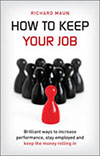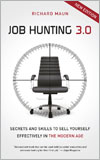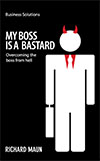better business blog
Tips and stories to add value to you and your organisation

The Sales Activity Log
I like to keep things simple. Maybe because I’m a simple soul at heart. Life seems hard enough already, with bills to pay and children to organise and food to be cooked and all the other things we have to pay attention too.
Business can seem complex and daunting, more so if we’re setting out on a new venture and have a long list of items to tick off. We can get a bit lost in the details and can lose sight of what business really is and what makes us successful in our work.
In my experience the most successful businesses have a clear sense of purpose. The owner knows what they are selling and who their customers are. They know what makes them different and special, compared to the competiton, and they keep that firmly in sight at all times.
The more simple we keep things the easier it is for our customers to buy into us, because they have busy lives too and are not interested in complicated sales pitches. They have a pain point that they would like to fix, so they can get on with their business.
Keeping things simple means that we need 3 key documents in our business, that work to keep us on track:
1. A cashflow forecast. Cash is king and without it we will go bust. It’s that simple, so we need to know the ebb and flow of cash into our business.
2. A marketing plan. We need to identify our unique selling points, what our message is to the world and how we are going to get our message out. If we don’t know what makes us special and different then how can we expect others to know that too? Differences count because we can leverage them when people are making purchase decisions.
3. A sales activity log. We need to keep track of all the enquiries and purchase patterns we have in our business, so that we can be proactive and chase up new orders. If we can see what’s happening we can do something about it.
Now, I have to hold up my hand and admit that several years ago I had the first two documents and lacked a sales activity log. What I had was a bunch of Post-it notes and scraps of paper on my desk. A sort of sales activity pile, if you like.
I was noting possible enquiries and projects, but in pile form I could do nothing with them. They were just a pile and too easy to ignore, with me saying often ‘hmmm I need to sort that, I will do that tomorrow.’
I’m great at procrastination and would probably have got an A* in my Procrastination GCSE, had there been one all those years ago.
Then one day a friend said he had some spare time and was looking for a business project and I knew how we could both get a win-win out of it. I threw all my bits of paper into a large envelope, posted it to him and asked him to create a sales activity log for me.
That was one of my smartest moves in 15 years of business. He created a simple spreadsheet and suddenly I could see what was happening in my business. Customers were chased up, quotes were written and my simple sales process started to deliver results.
I’ve had a sales activity log ever since and now get my PA to organise it and nudge me when it’s time to make a call and follow someone up.
I’m a great business coach and love my work and also give myself permission to learn too. We don’t have to know all the answers all the time and yet we can make sure we have our 3 key documents in our business.
So, this week take a fresh look at your sales activity log. Even if all you have is a sheet of paper pinned to a notice board that’s good enough. Anything is better than nothing and you’d be surprised how many businesses have nothing!
Next week: Putting In The Miles
e-publishing
Click icon for details


recent posts
browse archive
books
Click cover to view details on Amazon

How to Keep Your Job
Brilliant ways to increase performance, stay employed and keep the money rolling in
Published 2011 Marshall Cavendish
208pp

Job Hunting 3.0
Secrets and skills to sell yourself effectively in the Modern Age
Published 2010 Marshall Cavendish
260pp

 RSS
RSS


